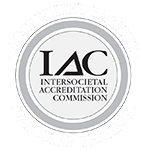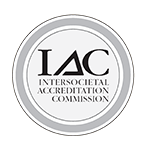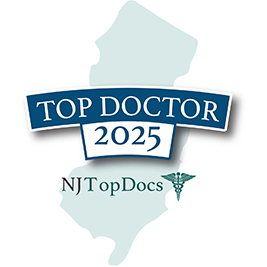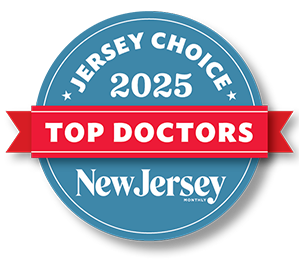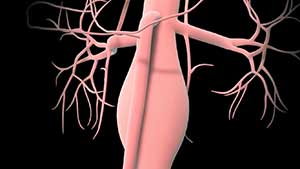
Part of our goal at The Cardiovascular Care Group is to offer transparency and additional education and understanding in vascular topics. Understanding and potentially preventing aortic aneurysms is an important aspect of what we do in our medical practice. And by giving you a laymen’s introduction to this subject, we hope to make you aware of this “silent killer”.
Why are Aneurysms Called ‘Silent Killers’?
Aortic aneurysms are frequently called ‘silent killers’ because no symptoms may occur until the actual rupture. And, in most cases, surviving a rupture has very low odds because you may not get to the hospital in time, or, once there, the emergency surgery may be too much to handle.
What is an Aortic Aneurysm?
Quite simply, aneurysms are an abnormal widening of an artery. The most common location for an aneurysm to occur (outside of the brain) is in the main artery in the stomach – the aorta – which carries blood from the heart to the body. This is known as an Abdominal Aortic Aneurysm.
Another type that also occurs away from the cerebral area is a Thoracic Aortic Aneurysm. This aneurysm occurs where the aorta passes through the chest.
Much like water balloons, as arteries widen (an aneurysm forms), the arterial wall gets thinner. The thinner it gets, the weaker it becomes and the more likely it will burst (rupture). This results in bleeding inside the body which significantly puts one’s life at risk.
Causes and Risks for Aortic Aneurysms
The risk factors for developing an aortic aneurysm may include the following:
- Age/Gender: Aortic aneurysms are found more often in males who are 60 and older.
- Smoking: Smokers are significantly more likely to suffer an aneurysm than non-smokers.
- High Blood Pressure: This can double the risk of an aneurysm and also increases the rate at which an aneurysm can grow.
- Peripheral Artery Disease (PAD): Diseases that affect the legs along with circulatory issues due to lack of blood supply can lead to an aneurysm.
- Race: White males have a higher incidence of Aortic Aneurysms than any other group of race or sex.
- Family History: Having a history of aortic aneurysms in your family increases the risk of having the condition.
- Genetic Disorders: Several connective tissue disorders such Marfan, Ehlers-Danlos, and Loeys-Dietz, plus Turner syndrome which causes heart abnormalities in females, may lead to a greater chance of suffering an Aortic Aneurysm.
Unfortunately, many aortic aneurysms are asymptomatic (no signs of symptoms), and go undiagnosed as a result. Most aortic aneurysms are detected on an imaging study (CT scan or MRI) being done for something else (e.g., prostate issues or gastrointestinal maladies.)
Aneurysm Prevention
There are steps one can take to help prevent aortic aneurysms. Most prevention techniques begin with healthy lifestyle choices. Smoking cessation is one of the most important ways to lower the risk, along with controlling your blood pressure and maintaining good cholesterol levels, which relate to eating healthy and exercising regularly.
While patient history and physical examination are critical in the assessment and diagnosis of this condition, a noninvasive ultrasound in a vascular laboratory is one of the most reliable and safest ways to diagnose and follow the potential progression of an aortic aneurysm. By using ultrasound, the aneurysm can be measured and watched over time to see if it is growing and at what rate it is expanding (if at all).
Other tests such as CT Scans and Magnetic Resonance Imaging (MRI) also allow for a diagnosis, however require radiation and the use of contrast (dye) that makes them more invasive than an ultrasound.
Knowing the risk and early detection are especially important and can be achieved through the testing mentioned above and consultation with a board-certified vascular physician.
This can be initiated by one’s primary care physician or done directly through a vascular disease screening program, a community service initiative available through The Cardiovascular Care Group to patients who meet certain criteria.




